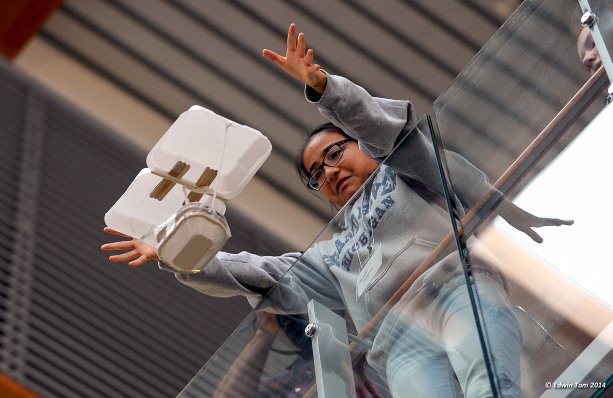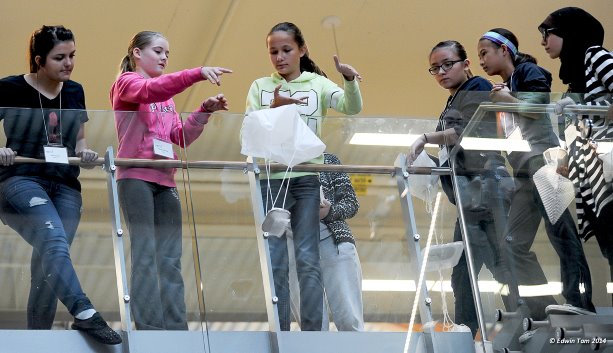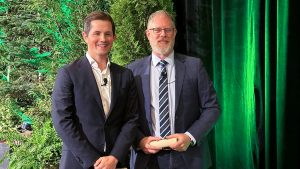The chair of the Ontario Network of Women in Engineering (ONWiE) recalls asking some Girl Guides during an event what they thought an engineer looked like.
The nine and 10-year-olds went to work drawing their visions. When asked to show their illustrations, Mary Wells says the pictures that came back were of men, typically in some sort of uniform, carrying tools and appearing like a mechanic or train engineer.
"There’s just a real lack of knowledge about what engineering is. As a child, you would never go interact with an engineer. Yet, it’s all embedded all around us," she says.
"You sort of see the fingerprints of all the engineers that have done that work, but very rarely do you get to meet one in person, see what they do."
Such is the reason why she says events like Go Engineering (ENG) Girl are important, as it gives young women a chance to explore the wide range of opportunities through group activities, meeting with engineers and hearing about the profession. Recently, universities across Ontario hosted the 10th Go ENG Girl event for students in Grades 7 through 10 and their parents.
"We had over 950 girls attend," Wells explains.
ONWiE was formed in 2005 between all the schools and faculties of engineering across Ontario. This network aims to support current female engineers, students, and encourage the next generation of women to pursue careers in the field.
"We’ve all decided to work together," says Wells.
"One of the big messages is, take the math and sciences in high school to make sure by the time you get to Grade 12 you are still able to apply for engineering. The big problem is Grade 12 physics. There’s a huge drop off for both men and women in Grade 12 physics, but by far a larger portion of women. The proportion of women in Grade 12 physics is 33 per cent. This is one of the big barriers. Our engineering-ready girls, let’s say from high school, it’s only 33 per cent. That’s something we need to address."
Edwin Tam, assistant dean, student affairs for the Faculty of Engineering at the University of Windsor says year after year he sees the event succeed in spreading the message that young women can make successful engineers.
"We had about 57 young girls participate in the event itself (at the school)," he says, adding there is a stereotype that women don’t normally get into engineering.
"A lot of young girls, they don’t necessarily consider engineering because it does have a history of being male dominated, even though there’s a lot of very well-known female engineers. Even on a more general level, regardless of whether you’re a boy or a girl, engineering doesn’t have quite the exposure that people necessarily want. My running joke is there’s no good TV show. We don’t have a Criminal Minds, or a Saving Grace. They think of lawyers, doctors, forensics, that kind of thing. They don’t automatically think of engineers, even though engineering is basically everywhere."
Wells echoes Tam’s sentiments, stating there are some misconceptions.
"They think engineers are spending all their time at the computer. But there’s lots of times you’re out in the field," she says.
"They (also) tend to think it’s not very creative, like you’re just fixing a little cog in a big machine, whereas it’s a very creative process. They don’t think that the work they would do as an engineer could really help the world. You rarely see the connection between what engineers do and how it helps the world. We’re trying to change that message."
Through Go ENG Girl, the results are starting to show.
"One of my metrics for success is we started to look at application rates. Ten years ago the percentage of women that were applying to study engineering across Ontario…was about 16 per cent. Now we’re up to about 22 per cent," Wells states.
The event is also garnering interest outside of the province, with the University of British Columbia taking part this year.
"It’s a program I would like to see go national," Wells says.
Tam adds getting more women in the engineering workforce would only serve as an asset, as many of them make "strong graduates."
"If you don’t have enough sufficient women in the workforce for engineering, you’re missing out on half of the human population in terms of talent and ability," Tam explains.
"Engineering is not a gender-based profession."












Recent Comments
comments for this post are closed